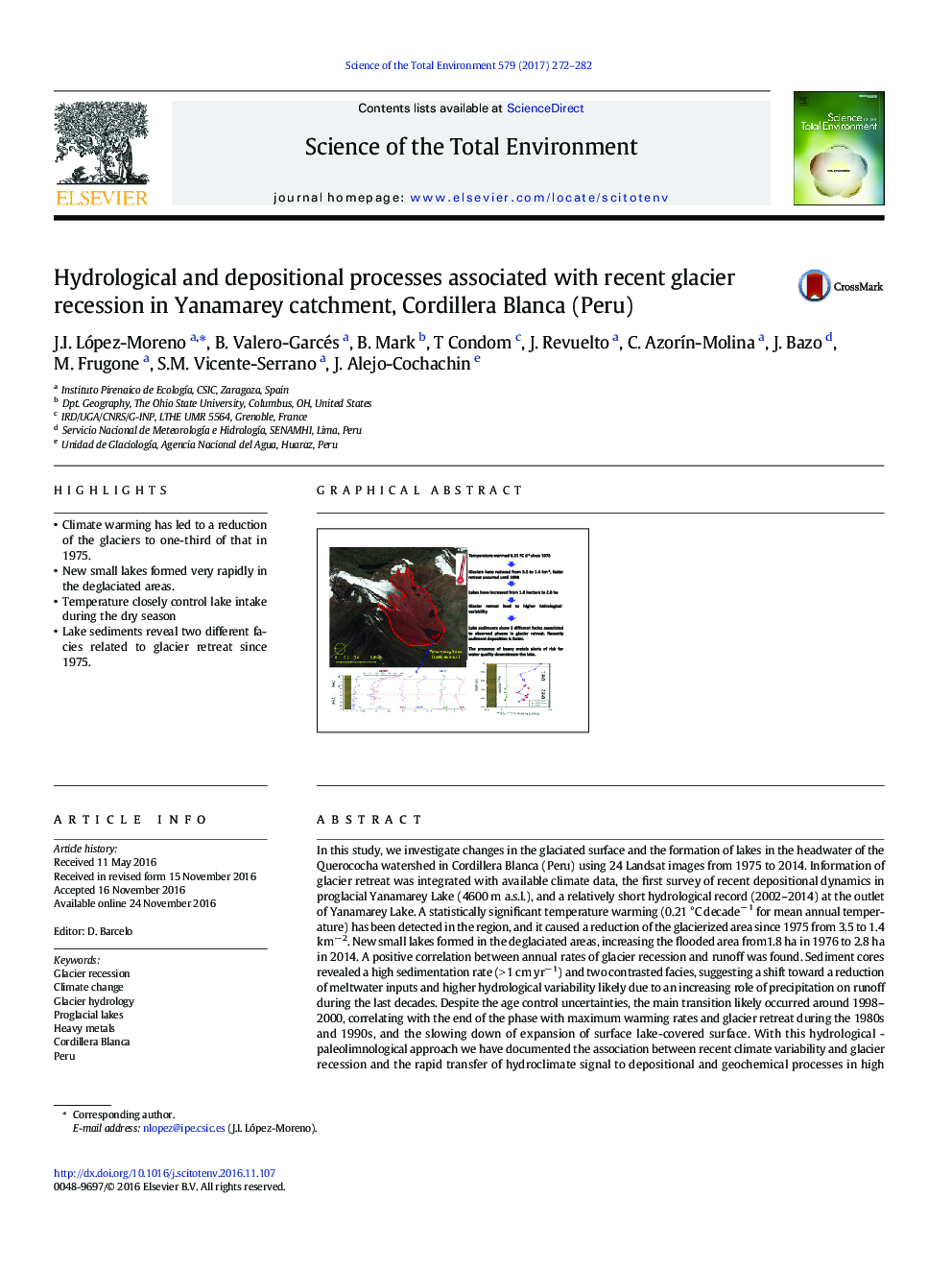| Article ID | Journal | Published Year | Pages | File Type |
|---|---|---|---|---|
| 5751380 | Science of The Total Environment | 2017 | 11 Pages |
â¢Climate warming has led to a reduction of the glaciers to one-third of that in 1975.â¢New small lakes formed very rapidly in the deglaciated areas.â¢Temperature closely control lake intake during the dry seasonâ¢Lake sediments reveal two different facies related to glacier retreat since 1975.
In this study, we investigate changes in the glaciated surface and the formation of lakes in the headwater of the Querococha watershed in Cordillera Blanca (Peru) using 24 Landsat images from 1975 to 2014. Information of glacier retreat was integrated with available climate data, the first survey of recent depositional dynamics in proglacial Yanamarey Lake (4600 m a.s.l.), and a relatively short hydrological record (2002-2014) at the outlet of Yanamarey Lake. A statistically significant temperature warming (0.21 °C decadeâ 1 for mean annual temperature) has been detected in the region, and it caused a reduction of the glacierized area since 1975 from 3.5 to 1.4 kmâ 2. New small lakes formed in the deglaciated areas, increasing the flooded area from1.8 ha in 1976 to 2.8 ha in 2014. A positive correlation between annual rates of glacier recession and runoff was found. Sediment cores revealed a high sedimentation rate (> 1 cm yrâ 1) and two contrasted facies, suggesting a shift toward a reduction of meltwater inputs and higher hydrological variability likely due to an increasing role of precipitation on runoff during the last decades. Despite the age control uncertainties, the main transition likely occurred around 1998-2000, correlating with the end of the phase with maximum warming rates and glacier retreat during the 1980s and 1990s, and the slowing down of expansion of surface lake-covered surface. With this hydrological - paleolimnological approach we have documented the association between recent climate variability and glacier recession and the rapid transfer of hydroclimate signal to depositional and geochemical processes in high elevation Andean environments. This, study also alerts about water quality risks as proglacial lakes act as secondary reservoirs that trap trace and minor elements in high altitude basins.
Graphical abstractDownload high-res image (239KB)Download full-size image
